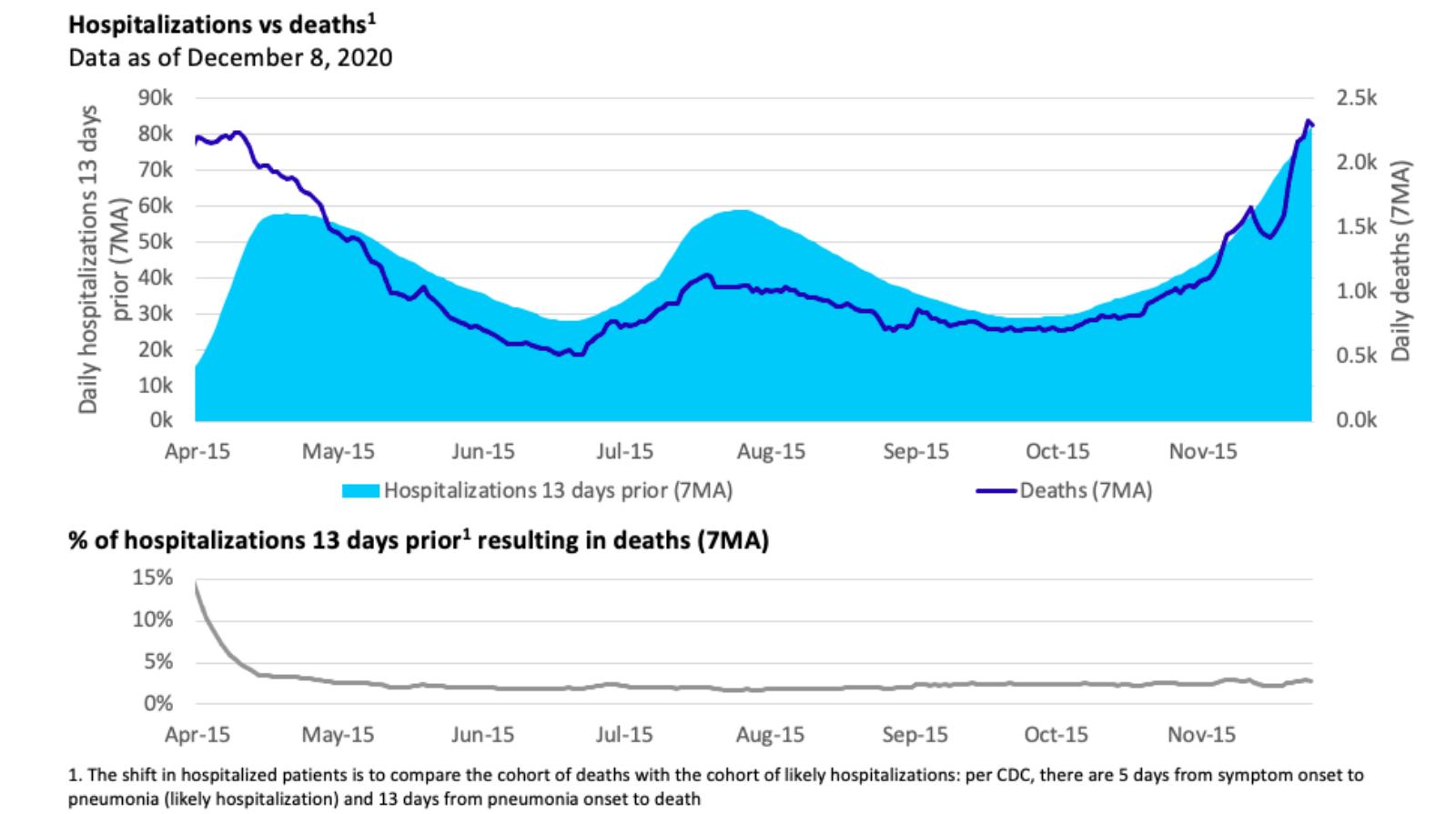COVID-19 Deaths Per Hospitalization Has Held Constant Since May, But an Uptick Could Be Looming in US

Source: Oliver Wyman Pandemic Navigator
Since April, the ratio of deaths to hospitalized COVID-19 patients has decreased from 15% and has held steady around 2% since May in the U.S. However, as hospital capacity becomes further strained across the country, there is potential for this trend to reverse if COVID-19 patients no longer have access to the level of care they need, according to Oliver Wyman.
The decrease in the death rate is likely due to a variety of factors. For instance, there was a greater need for triage and ventilator rationing in the early stages of the pandemic when hospital/ICU capacity was reached. Also, new treatments for COVID-19, including antivirals and steroids, have been shown to improve survival rates. Lastly, sophisticated and optimized protocols have been developed that improve outcomes, such as lower use of ventilators and improved body positioning for oxygenation.
One in 10 Americans live in a region where fewer than 5% of ICU beds are available as of December 9, according to the New York Times. With the increase of Thanksgiving travel — and as the holiday season approaches — this could result in a new wave of cases and hospitalizations.





